New York's Venus Over Manhattan gallery casts rare works by Alexander Calder in a whole new light
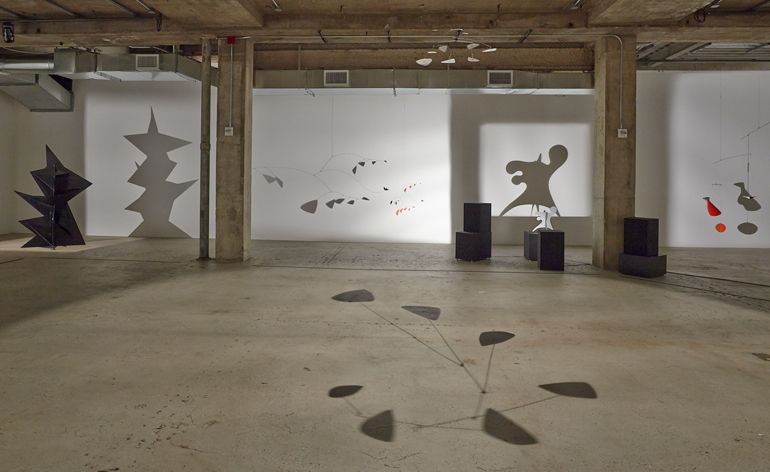
If, like us, you thought you had seen all there is of Alexander Calder, think again. The iconic American artist is the subject of a new exhibition at New York's Venus Over Manhattan gallery that is uniquely staged in the dark.
Organised with the support of the Calder Foundation, 'Calder Shadows' is a seductive new take on Calder's recognisable creations, which still upholds the principles of abstraction and kinetics that he championed throughout his career.
Presented in an austere, dimly lit space, the exhibition sees eleven works, from 1929 to 1974, ingeniously spot-lit so that each accompanying shadow comes fully into view. Delicate mobiles like 'The New Ritou' (1948) and 'Little Black Flower' (1944) – a privately held piece that represents Calder's mature style and has not been exhibited since the 1940s – hang quietly while larger, ominous shadows loom behind. Thin metal wires are transformed into animated line drawings that oscillate and turn with the slightest movement of air, highlighting the kinetic aspect of Calder's work.
The novel display was inspired by archival images of Calder installing his sculptures in darkness and photographing them using directed light. The images caught the eye of the gallery's founder Adam Lindemann, who decided to reorientate Calder's familiar aesthetic. 'I wanted to somehow evoke Calder as I see him,' he explains. 'I wanted to get in touch with the emotional way that I see these pieces move and stand still.'
In the darkened gallery, even stationary works like 'Mr Loyal (Ringmaster)' (1967) and 'Red Curlicue' (1973) have a larger-than-life presence. Both are maquettes, which reveal a little about how Calder sought to resolve scale issues when he designed his monumental stabiles.
Backed by an instrumental soundtrack, 'Calder Shadows' embodies the qualities of abstraction and exploration that the artist became known for. 'Experimentation is part of Calder's work,' says Lindemann. 'There are the films and the performance aspect of the circus [theme], and so the theatricality that I have brought to it is consistent with Calder's mood and his own spirit.'
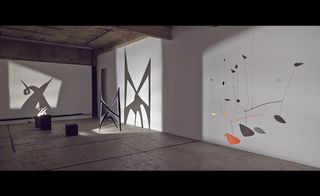
The novel display was inspired by archival images of Calder installing his sculptures in darkness and photographing them using directed light. The images caught the eye of the gallery's founder, Adam Lindemann, who decided to reorientate Calder's familiar aesthetic
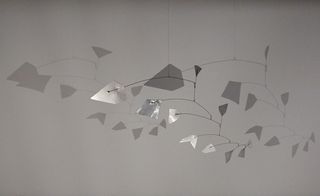
'I wanted to somehow evoke Calder as I see him,' says Lindemann. 'I wanted to get in touch with the emotional way that I see these pieces move and stand still'
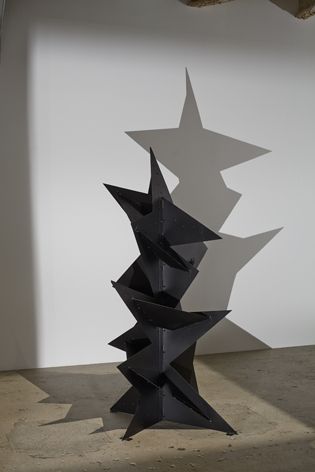
In the darkened gallery, even stationary works like 'Monsieur Loyal (Ringmaster)', 1967, pictured here, and 'Red Curlicue', 1973 have a larger-than-life presence. Both are maquettes, which reveal a little about how Calder sought to resolve scale issues when he designed his monumental stabiles
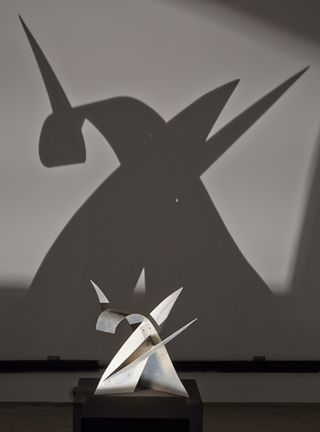
'Red Curlicue' [maquette], 1973
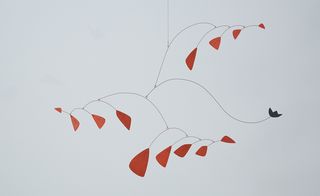
'Little Black Flower', 1944. This privately held piece has not been exhibited since the 1940s
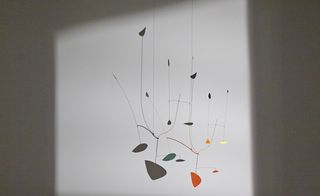
The works featured range in date from 1929 to 1974, with this piece called 'Untitled', from 1939
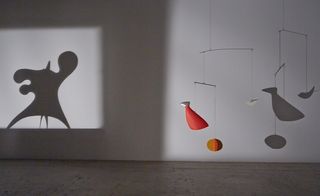
Backed by an instrumental soundtrack, 'Calder Shadows' embodies the qualities of abstraction and experimentation that the artist became known for
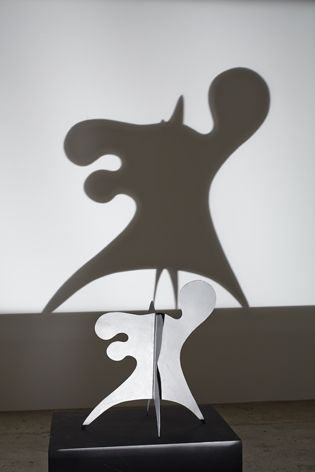
'Ex-Octopus', 1936, is graphically magnified in size on the wall
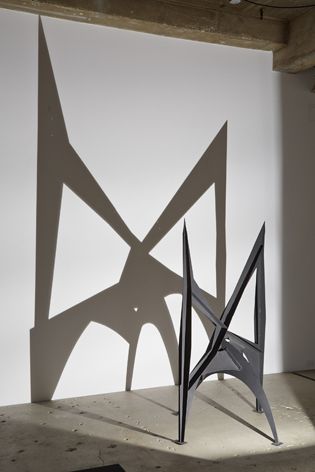
The shadow of 'Morning Cobweb' [intermediate maquette], 1967, becomes even more menacing with project
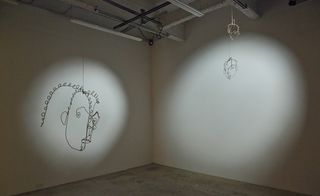
'Untitled', 1929, is constructed of thin metal wires that are transformed into an animated line drawing, which oscillates and turns with the slightest movement of air, highlighting the kinetic aspect of Calder's work
ADDRESS
Venus Over Manhattan
980 Madison Avenue
New York
Wallpaper* Newsletter
Receive our daily digest of inspiration, escapism and design stories from around the world direct to your inbox.
Pei-Ru Keh is a former US Editor at Wallpaper*. Born and raised in Singapore, she has been a New Yorker since 2013. Pei-Ru held various titles at Wallpaper* between 2007 and 2023. She reports on design, tech, art, architecture, fashion, beauty and lifestyle happenings in the United States, both in print and digitally. Pei-Ru took a key role in championing diversity and representation within Wallpaper's content pillars, actively seeking out stories that reflect a wide range of perspectives. She lives in Brooklyn with her husband and two children, and is currently learning how to drive.
-
 A major Frida Kahlo exhibition is coming to the Tate Modern next year
A major Frida Kahlo exhibition is coming to the Tate Modern next yearTate’s 2026 programme includes 'Frida: The Making of an Icon', which will trace the professional and personal life of countercultural figurehead Frida Kahlo
By Anna Solomon Published
-
 Stay at Nujuma, a forward-facing sanctuary in the Red Sea region
Stay at Nujuma, a forward-facing sanctuary in the Red Sea regionNujuma, a Ritz-Carlton Reserve, sets the bar high as one of Saudi Arabia’s ultra-luxury destinations
By Lauren Ho Published
-
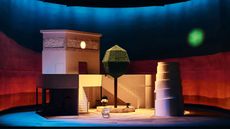 Pierre Yovanovitch’s set and costumes bring a contemporary edge to Korea National Opera in Seoul
Pierre Yovanovitch’s set and costumes bring a contemporary edge to Korea National Opera in SeoulFrench interior architect Pierre Yovanovitch makes his second operatic design foray, for The Marriage of Figaro in Seoul
By Tianna Williams Published
-
 Desert X 2025 review: a new American dream grows in the Coachella Valley
Desert X 2025 review: a new American dream grows in the Coachella ValleyWill Jennings reports from the epic California art festival. Here are the highlights
By Will Jennings Last updated
-
 This rainbow-coloured flower show was inspired by Luis Barragán's architecture
This rainbow-coloured flower show was inspired by Luis Barragán's architectureModernism shows off its flowery side at the New York Botanical Garden's annual orchid show.
By Tianna Williams Published
-
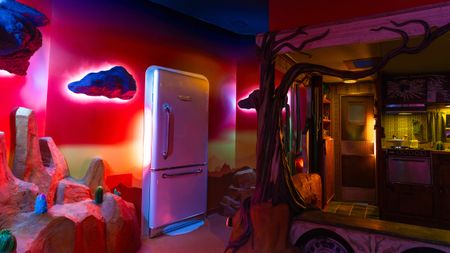 ‘Psychedelic art palace’ Meow Wolf is coming to New York
‘Psychedelic art palace’ Meow Wolf is coming to New YorkThe ultimate immersive exhibition, which combines art and theatre in its surreal shows, is opening a seventh outpost in The Seaport neighbourhood
By Anna Solomon Published
-
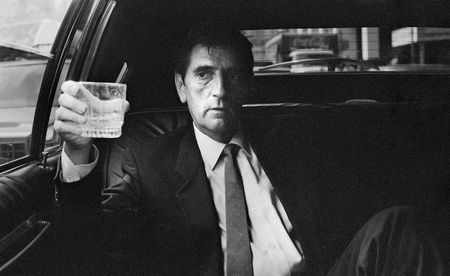 Wim Wenders’ photographs of moody Americana capture the themes in the director’s iconic films
Wim Wenders’ photographs of moody Americana capture the themes in the director’s iconic films'Driving without a destination is my greatest passion,' says Wenders. whose new exhibition has opened in New York’s Howard Greenberg Gallery
By Osman Can Yerebakan Published
-
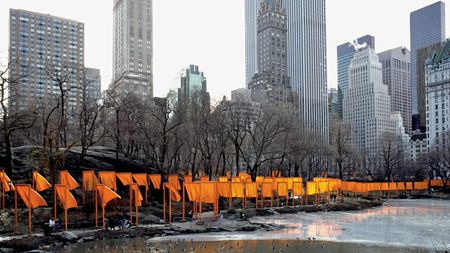 20 years on, ‘The Gates’ makes a digital return to Central Park
20 years on, ‘The Gates’ makes a digital return to Central ParkThe 2005 installation ‘The Gates’ by Christo and Jeanne-Claude marks its 20th anniversary with a digital comeback, relived through the lens of your phone
By Tianna Williams Published
-
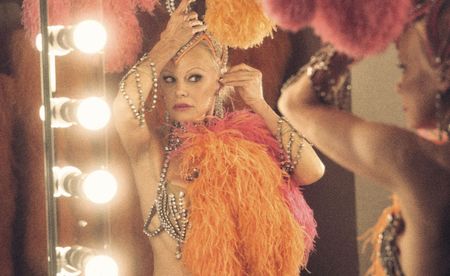 In ‘The Last Showgirl’, nostalgia is a drug like any other
In ‘The Last Showgirl’, nostalgia is a drug like any otherGia Coppola takes us to Las Vegas after the party has ended in new film starring Pamela Anderson, The Last Showgirl
By Billie Walker Published
-
 ‘American Photography’: centuries-spanning show reveals timely truths
‘American Photography’: centuries-spanning show reveals timely truthsAt the Rijksmuseum in Amsterdam, Europe’s first major survey of American photography reveals the contradictions and complexities that have long defined this world superpower
By Daisy Woodward Published
-
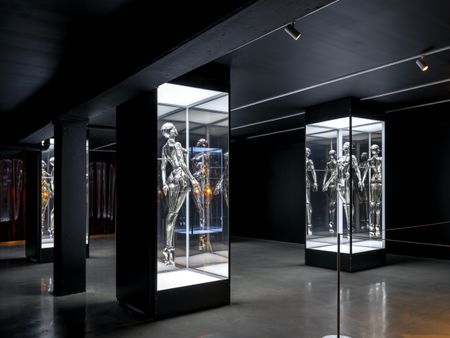 Miami’s new Museum of Sex is a beacon of open discourse
Miami’s new Museum of Sex is a beacon of open discourseThe Miami outpost of the cult New York destination opened last year, and continues its legacy of presenting and celebrating human sexuality
By Anna Solomon Published